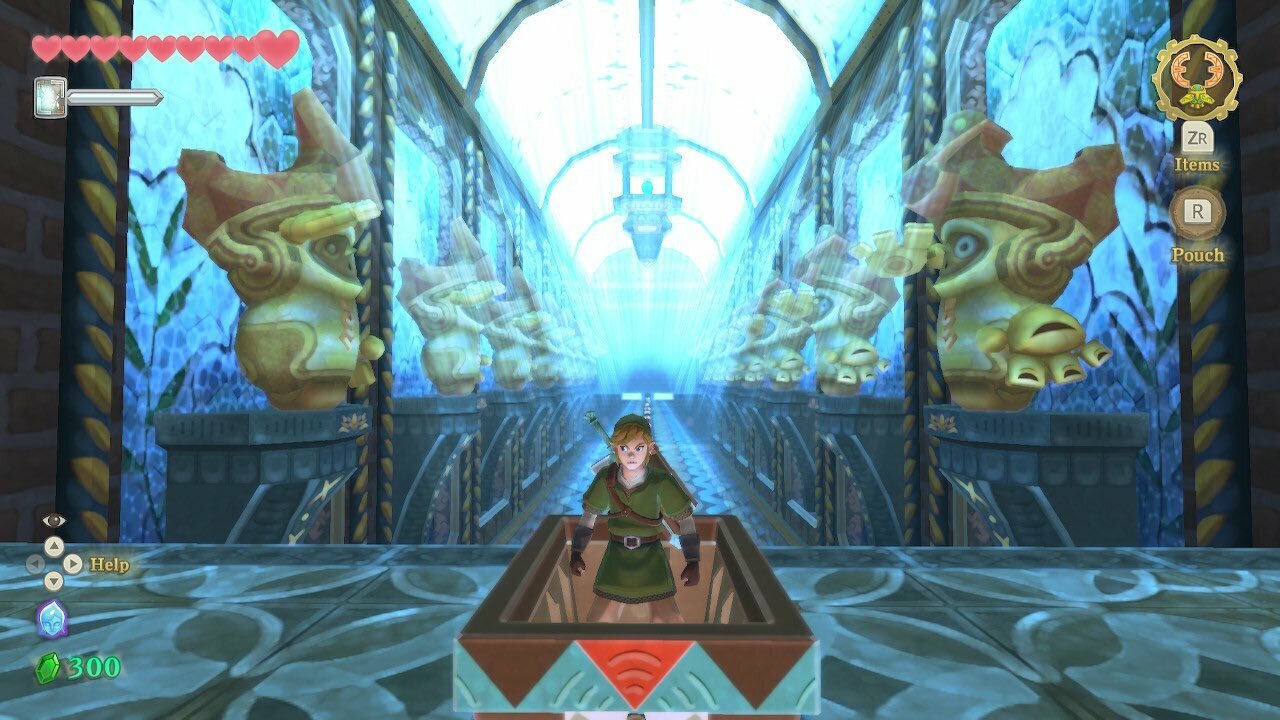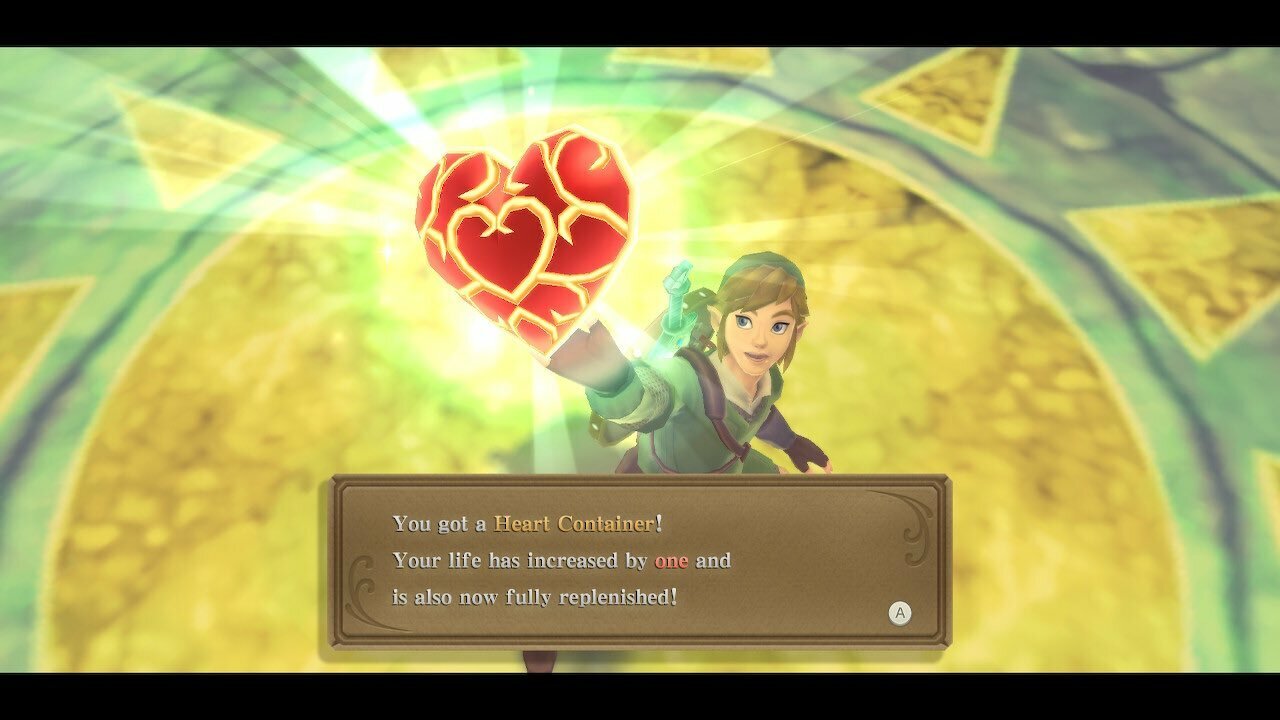The Legend of Zelda: Skyward Sword is one of the most divisive entries in Nintendo's acclaimed series. As the first full-fledged Zelda game designed for the Wii, the title made extensive use of the Wii Remote, eschewing the series' traditional control scheme for controversial motion controls. A decade later, Nintendo has remastered Skyward Sword for the Switch, and while many of the game's original faults remain intact, a variety of welcome tweaks make it easier to appreciate now.
As with the Wii U remasters of The Wind Waker and Twilight Princess, Nintendo has made numerous quality-of-life improvements to Skyward Sword. These tweaks are largely minor but have an appreciable effect on the game's playability. Some previously mandatory tutorials are now optional, for instance, and you can speed up dialogue and skip cutscenes, making the game's languid opening moments much breezier.
More substantial are the adjustments to Fi, the spirit who dwells within your sword. Like Navi and Midna in previous Zelda games, Fi serves as your companion for most of the adventure in Skyward Sword, frequently interjecting to relay story information and other hints. Her constant interruptions made her one of the most grating aspects of the original game, especially as the "insights" she offered were often glaringly obvious. That has largely been rectified here, and while she still speaks frequently in Skyward Sword HD, much of her dialogue is now optional, which makes her less bothersome and improves the game's overall pacing.
The biggest change in Skyward Sword HD, however, is the addition of button-only controls. This new control scheme can be toggled on or off at any point from the options menu and allows you to play the game without motion controls. Unfortunately, it doesn't work that well. Because so many aspects of the game were designed around the increased range of movements that motion controls afforded, the button controls feel like a cumbersome workaround. Most of the actions you would normally perform using gestures have been mapped to the right stick, which means the button-only scheme is dramatically different from the controls in other Zelda games. Rather than swinging your sword with a press of a button, for instance, slashes are performed by flicking the right stick in different directions, and you need to hold the right stick forward and press the ZR button to throw a bomb overhead. As a result, even simple actions feel more convoluted to execute.
The camera also becomes more cumbersome to control while using the button-only scheme. When motion controls are enabled, you can freely adjust the camera using the right stick--a marked improvement over the original game, as the Wii lacked dual analog sticks. However, because the button-only scheme maps Link's sword arm to the right stick, you need to hold the L button down in order to swing the camera around with said stick (or rely on pressing the ZL button to constantly recenter the camera behind Link the old-fashioned way). It isn't nearly as intuitive, and you'll frequently find yourself inadvertently slashing with your sword when you intend to rotate the camera.

That's not to say the button-only controls are entirely worse, however. Some items and actions actually benefit from the new control scheme. Maneuvering the Beetle, an insect-shaped drone that you acquire early on in the adventure, is handled via the left stick rather than by turning the Joy-Con, making it easier to pilot with button controls. Swimming underwater similarly works better, as you maneuver Link with the left stick rather than by moving the Joy-Con. On the whole, however, the button-only controls don't feel nearly as natural to use, and they're a less-than-ideal alternative to the motion controls.
Fortunately, the motion controls largely function well. Whether or not they are improved over the original game, as Nintendo has claimed in trailers, is debatable; I couldn't personally notice an appreciable difference from my time with the game. That said, the motion controls are responsive, and I never encountered any significant issues when performing Link's actions. Slashing with the sword by swinging the Joy-Con feels intuitive and fun, and aiming with the controller's gyroscope is much snappier than with the control stick. You will, however, need to frequently reset the pointer while you play--something I don't recall ever having an issue with in the original game. Fortunately, that can be done quickly and easily with a press of the Y button, so it never becomes a significant problem.
These nips and tucks help smooth over Skyward Sword's rougher edges and improve the overall experience, but the core game is fundamentally unchanged--which means its original faults remain intact. More than other Zelda titles, Skyward Sword suffered from bloat, and that holds true in this remaster. There are many moments in the story where you'll be asked to revisit a previous area in order to retrieve a particular item or perform some other task before you can progress, and these always feel like busywork meant to prolong your adventure.

Worse are the tear hunts, which require you to collect 15 sacred tears while avoiding invincible foes that can take you out in a single strike. Should one of these enemies catch you, you'll need to restart the entire trial from the beginning and reobtain any tears you had previously collected. This steep penalty makes these tasks much more frustrating than the tear hunts in Twilight Princess, and they would have been more bearable had Nintendo reduced the number of tears you had to collect, as it did in Twilight Princess HD. Unfortunately, Skyward Sword's tear hunts are unchanged, and they're among the worst aspects of the game.
Despite these flaws, Skyward Sword is also filled with many genuinely magical moments. The soundtrack, notable for being Zelda's first fully orchestrated score, is still delightful, and the story is one of the most touching tales the series has ever woven, shedding light on the origins of Hyrule and other elements that have become hallmarks of the franchise. The game's dungeons are a highlight, as well, filled with clever puzzles that test your observation and lateral thinking. After Breath of the Wild excised classic-style dungeons, Skyward Sword's feel especially fresh and satisfying to explore, and the boss battles that await within are among the most fun encounters in the series.
These elements outweigh the game's flaws and make it a worthwhile adventure. The various quality-of-life tweaks that Nintendo has implemented here, welcome as they are, don't fix Skyward Sword's biggest issues, and it remains the most uneven 3D entry in the Zelda series. Even so, the improvements in this Switch remaster make the overall experience more enjoyable, and the characteristic Zelda magic ultimately outshines the game's faults.











